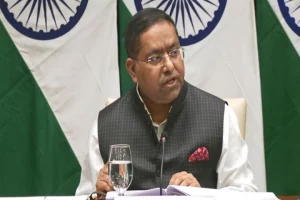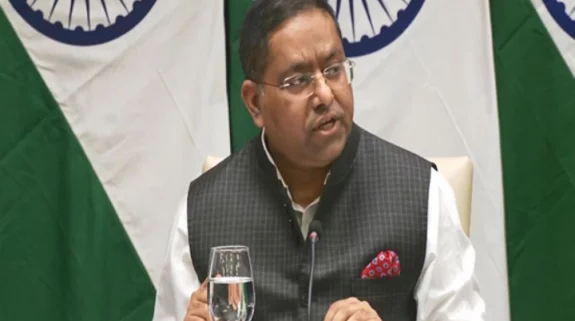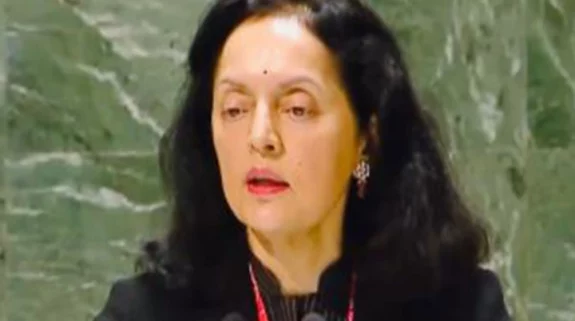The first Leaders’ summit of the Indo-Pacific Quad on Friday marks a historic step that may go a long way in fulfilling the advocacy of Robert D. Kaplan, who had written in his classic book, Monsoon, that the United States must get deeply engaged in the Indo-Pacific region, which was bound to emerge as the centre of gravity of world politics and economy.
Kaplan, who was close to mega-influencers such as geopolitics Guru, Zbigniew Brzezinski, an adviser to former President Barack Obama, has provided critical firepower to the idea of Washington’s energetic involvement in the Indo-Pacific—a vast sea space and its littoral, which is located on either side of the Malacca straits, a key channel for international trade.
A review of the Kaplan’s book in the New York Times by Princeton University Professor Aaron L. Friedberg provides a rare insight about Washington’s strategic imagination of a region that continues to remain in deep flux.
Excerpts of Friedberg’s review of the book MONSOON: The Indian Ocean and the Future of American Power by Robert D. Kaplan
“Maps often reveal more about those who draw them than they do about the reality they purport to represent. The Mercator projections that typically hang on the walls of classrooms and Pentagon offices place the United States in the middle, separated from Europe to the east by the Atlantic Ocean and from Asia to the west by the vast expanse of the Pacific. Our preference for this perspective no doubt reflects a certain national egocentrism, but for the better part of the last two centuries it has also made a good deal of strategic sense.”
“Whatever purpose they may once have served, yesterday’s maps have now outlived their usefulness. Since the end of the cold war, and with increased speed and intensity since 9/11, our focus has shifted toward the Middle East, and South and Southeast Asia, as well as toward the waters of the western Pacific. In “Monsoon,” Robert D. Kaplan argues that we need fresh ways of seeing the world…Kaplan’s goal is to provide his countrymen with just such a map, one centred on what he calls “the Greater Indian Ocean.” This is a region that stretches ‘eastward from the Horn of Africa past the Arabian Peninsula, the Iranian plateau and the Indian subcontinent, all the way to the Indonesian archipelago and beyond.’ Thanks to monsoon winds that shift direction at regular six-month intervals the waters connecting these far-flung shores have long been readily navigable, even by relatively primitive sailing vessels. Linked first by Muslim merchants, the Greater Indian Ocean was later dominated by Portugal, then by the British and most recently by the United States.”
“Although it became something of a strategic backwater during the cold war, this maritime domain is emerging as the global system’s centre of gravity. Through it pass huge tankers carrying a large fraction of the world’s energy. At its western end, from Somalia to the monarchies of the Persian Gulf to Iran and Pakistan along the shores of the Arabian Sea, lie the main sources of Islamist extremism. Most important of all, it is in the Indian Ocean that the interests and influence of India, China and the United States are beginning to overlap and intersect. It is here, Kaplan says, that the 21st century’s ‘global power dynamics will be revealed’.”
“Proceeding clockwise from Oman at the mouth of the Persian Gulf, Kaplan comes ashore at various points along the coasts of Pakistan, India, Bangladesh, Sri Lanka, Myanmar (formerly Burma) and Indonesia before completing his journey in Zanzibar off the shores of East Africa. At each point along the way he finds varying mixtures of economic dynamism, cultural diversity, ethnic tension, ecological strain and political turmoil. He is most optimistic about those places (like India and Indonesia) that combine democratic institutions with decentralized administrative structures and cultures of tolerance. Those (like Pakistan and Myanmar) where authoritarian regimes seek to impose order on diverse populations will remain dangerously prone to radicalization, instability, violence and the possibility of internal collapse, external meddling or both. Some (like Bangladesh and Sri Lanka) could go either way.”
“Kaplan is at his best when he describes the “new Great Game” that is now unfolding across the Indian Ocean. As he correctly notes, it is China that is primarily responsible for setting this game in motion. Since the turn of this century, that country’s explosive economic growth has propelled it outward in search of markets, materials and, above all, energy. Thirsty for oil, Chinese tankers now ply the waters from the western Pacific, down through the narrow Strait of Malacca off Indonesia, across the Indian Ocean to the Persian Gulf.”
“In a world governed solely by the laws of supply and demand, China’s increasing engagement in global energy markets would pose no serious problems. But there are other forces at work. Despite their smiles and professions of good will, China’s leaders believe that the United States is threatened by their country’s rise and ultimately seeks to thwart it. Given the fact that the United States Navy dominates the world’s oceans, a growing dependence on seaborne energy imports represents a potentially deadly vulnerability in Chinese eyes.”
“Beijing has responded in two ways: first by beginning to build up its own naval power, and second by seeking alternative supply routes that are less susceptible to interdiction by the United States or other hostile powers.”
“The pursuit of energy, Kaplan explains, has thus caused China to become much more active and visible in an area that a fast-growing India regards as its own backyard. In response, despite continuing worries over internal stability and the perpetual problem of a hostile Pakistan, Indian planners have begun to broaden their strategic horizons. New Delhi now seeks to compete with Beijing for influence in Myanmar and to counter its initiatives around the Bay of Bengal by strengthening ties with Vietnam and Indonesia in the South China Sea.”
“Kaplan holds open the possibility that nascent great-power rivalry will lead to ever closer cooperation. Perhaps, as the two Asian giants grow stronger, and with America “in elegant decline,” the era of United States naval dominance in the Greater Indian Ocean will give way to “an American-Indian-Chinese condominium of sorts.”
“What seems more plausible at this point is that the competitive impulses Kaplan so accurately assesses will grow stronger. If that is what happens, then the United States and India are very likely to find themselves working harder and more closely in the years ahead to balance China’s growing power.”
(The full review of Kaplan’s book can be accessed at https://www.nytimes.com/2010/11/21/books/review/Friedberg-t.html)




















